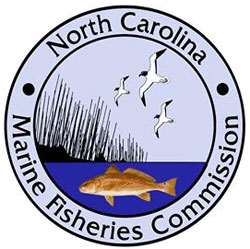RALEIGH – The North Carolina Department of Environmental Quality said Thursday it had this week urged the Fayetteville-area company behind the GenX discharge into the Cape Fear River to stop discharging two additional chemical compounds into the river.
The additional compounds were identified in Chemours’ waste stream in an Environmental Protection Agency analysis shared with the state this week, DEQ announced. EPA scientists told the state during a meeting Monday that they have identified two compounds being called Nafion byproducts 1 and 2 in Chemours’ waste stream and that estimated concentrations of these compounds are not decreasing.
Supporter Spotlight
The information prompted DEQ to write Chemours on Tuesday, urging the company to stop the release of the two compounds. DEQ also repeated its demand for Chemours to provide the state agency with a complete inventory, sampling data and test results for all chemicals included in the company’s waste stream.

“Our top priority is to protect the state’s citizens,” said DEQ Secretary Michael Regan. “Until we know more about the health effects of these byproducts, the company needs to stop discharging them. We’re also repeating our demand that Chemours give us information about all other chemicals in its waste stream.”
Estimated concentrations of these three perfluorinated compounds dropped significantly, similar to GenX levels after the company stopped discharging GenX. For that reason, state and federal officials believe the three perfluorinated compounds were part of the same wastewater discharge that included GenX and was stopped.
DEQ is now asking Chemours to stop discharge of the Nafion byproducts, which preliminary results indicate come from the company’s wastewater but are unchanged since the GenX discharge ended.
Little is known about the health effects of any of the five compounds—Nafion byproducts 1 and 2 or the three other perfluourinated compounds – included in this week’s analysis from the EPA.
Supporter Spotlight
Public health experts with DHHS used available studies to establish a health goal for GenX. Since the GenX discharge stopped, concentrations of GenX have dropped well below the state health goal of 140 parts per trillion. No similar health studies have been identified for the Nafion byproducts or the other three perfluorinated compounds analyzed by the EPA, so DHHS is unable to establish a health goal for them at this time.
DHHS reiterated that the public can continue to drink the water, based on ongoing testing for GenX and other compounds for which health information is available. This guidance has not changed following the preliminary results shared by the EPA this week.
“I know how frustrating it is to all of us that we have very little scientific information about these unregulated, emerging compounds,” said Mandy

Cohen, secretary of the state Department of Health and Human Services. “We continue to work with the Environmental Protection Agency, the Centers for Disease Control and Prevention and other scientists to get more information as quickly as possible.”
As part of the ongoing investigation, DEQ requested that the EPA analyze water samples for GenX and other unregulated chemical compounds included in the 2016 study conducted by the EPA and N.C. State University.
Among those chemicals are the perfluorinated compounds the EPA reported this week. The EPA also chose to analyze the water samples for the Nafion byproducts based on a separate prior study by the federal agency. Specialists with the EPA’s lab in Research Triangle Park conducted the analysis using new technology and methodology and looked at water samples collected by DEQ over a six-week period starting June 19.
DEQ said it would review all this information as part of its investigation and the agency’s review of Chemours’ application for a new wastewater discharge permit.
House Republicans took to Twitter Thursday, accusing Gov. Roy Cooper’s administration of “possibly withholding” the EPA report.







